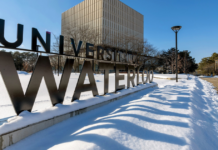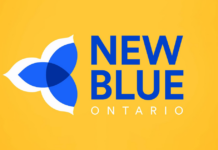Alberta Premier Danielle Smith has promised to stop using tabulators in Alberta elections.
Smith’s base has long called for more election transparency and decried the use of electronics in the ballot-counting process, believing tabulators increase the potential for tampering with results.
The premier promised to rid provincial elections of tabulators while speaking at a United Conservative Party fundraiser in Bonnyville on January 26.
“Are you going to end the use of voting tabulators across the province?” Smith is asked on stage, to which she simply responds, “yes.”
A video of the exchange has been viewed by True North.
The premier’s promise comes after tabulators were widely used in the 2023 provincial election, which the UCP narrowly won.
As part of Elections Alberta’s Vote Anywhere Service, electors could show up at any voting place and receive a ballot for their riding. Electors would fill out their paper ballot and slip it into a tabulator. The tabulators counted the votes and printed a form with the results for each riding on election day.
Voting results were delayed for hours on election night. Elections Alberta said the delay was caused due to the time it took to manually enter results the tabulators printed.
“We did not use any electronic data transfer from the tabulators, as the tabulators used for advance voting were never connected to a network at any time,” the agency told True North in June. “As a result it was a manual process to verify and enter these results.”
Elections Alberta said tabulators are an essential part of how it delivers the vote, and without them, it would need to sort hundreds of thousands ballots into electoral divisions before counting.
Elections Canada does not use any electronic voting or counting tools in federal elections, with ballots marked by pencil and counted by hand.
Ahead of the election, Smith told True North that she had “confidence” in Elections Alberta’s plan to use tabulators for the advanced vote because Elections Alberta would also preserve all paper ballots in case recounts were requested.
“I have confidence that because we have the ability to do a hand count as a follow up in the event there are close results, I believe that’s going to be sufficient,” Smith told True North at a press conference in April.
“That’s, I think, something that people expect in democracy – that you should be able to verify a vote if results end up very close.”





















